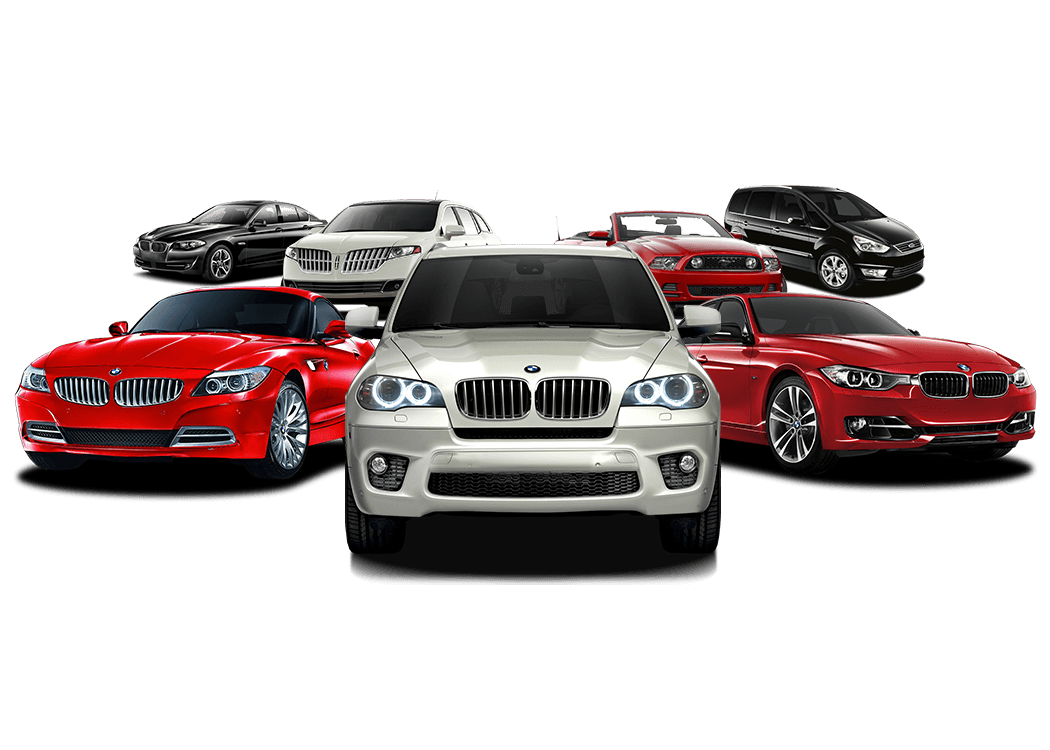5 The Production Car Was More Powerful Than The Concept
netcarshow.com
It’s no secret that concept cars don’t have to follow any particular rules or regulations. That’s why they range from a lounge on wheels to actual body panels dismembering from the bodywork for aerodynamics.
netcarshow.com
When Porsche put together the Carrera GT concept, the same rules applied. But, not only did they end up making the production car look 99% identical to the concept, the production car was more powerful and faster. Instead of a 5.7-liter V10 with 612 HP, the concept used a smaller 5.5-liter V10 with 558 HP. We can’t think of any other time when something like this has happened in the world of cars.
Carrera GT Price
Manufactured between the years of 2003 and 2007, Carrera GT models available on the market today are used models. As is typical with purchasing used vehicles, the price point will vary drastically based on a number of factors, so for that reason, the Carrera GT MSRP is not necessarily one simple number. Vehicles that are in mint condition, with low mileage, will demand the highest figures. While the Porsche Carrera GT price was $450,000 when new. Today you can expect to pay anywhere from $800,000 and up in today’s market. The demand typically tends to be higher for Carrera GT models with production years of 2004 or 2007. Overall, you can expect the Porsche Carrera GT price to keep rising as it continues to cement itself as a modern classic in Porsche’s portfolio.
8 The Incredible Racing Derived Engine
netcarshow.com
Lift up the bulged engine cover of the Carrera GT and underneath sits a 5.7-liter naturally aspirated V10 engine. It develops 612 HP, allowing the Carrera GT to reach 60 mph in 3.5 seconds (if you can change gears quickly enough), on to a top speed of 205 mph. The best thing about the engine is its origin story.
netcarshow.com
The 5.7-liter unit was originally intended to power a LeMans Prototype around 1999, but the project was shelved. The engine eventually found a home in the Carrera GT Concept at the 2000 Paris Motor Show. Amazingly, even though the Concept was built to get people around Porsche’s stand, the interest was overwhelming, so Porsche put it into production. The rest is history, and the Carrera GT is undoubtedly one of the best V10-powered cars ever made.
Carrera GT Interior
The interior of the Carrera GT includes everything that you have come to expect from the legendary automaker. High-quality leather and a sophisticated dashboard display offer the best of premium materials and advanced technology. Part of the advanced technology is the Bose audio system and a navigation system. While these features would be considered options in many vehicles, Porsche offered them as standard for the Carrera GT.
Porsche enthusiasts, however, will note a contemporary design for the seats. These sporty bucket seats certainly look edgier than the traditional Porsche seats, although the reasoning behind these inventive seats is unique, it is to keep the sports car light. These new seats, made of composite carbon and Kevlar and they weigh half as much as standard seats while adding a unique flair to the interior of this car. The Carrera GT was actually the first in the world of its kind in a production model with these kinds of seats.
One of the main focal points of the Porsche Carrera GT interior is the shift knob, which came in either carbon fiber or beechwood. The beechwood shift knob is a reference to iconic Porsche race cars of the past, and the shift knob serves as a beautiful and striking centerpiece to the interior, as well as a strong reminder of the pure and honest manual transmission the car employs.
Press Release: Carrera GT ‘Recommissioned’
02/04/2019
The Porsche Carrera GT is still counted among the most exciting sports supercars in the world, more than 15 years after it first appeared. Now, Porsche Classic has implemented a spectacular reconstruction as part of a custom order.
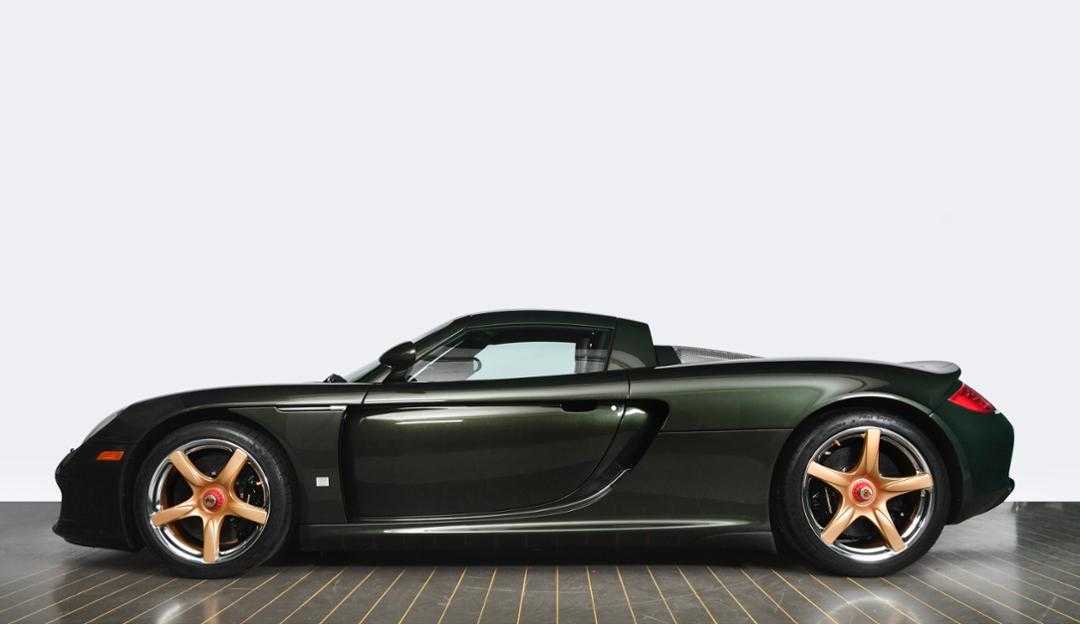
With a ten-cylinder V engine with 612 PS of horsepower derived from a Formula 1 powertrain, premium design, and – not least – the incomparable driving experience it offers, the Porsche Carrera GT remains a milestone in the world of sports supercars today, and a collector in the US has commissioned Porsche Classic to thoroughly rework one of their privately owned vehicles.
It was truly a spectacular project.
The collector wanted a complete, custom reconstruction of the vehicle, implemented at a manufacturing quality that can only be achieved by Porsche itself. The process involved the vehicle being entirely disassembled into individual parts, with every component extensively checked, and refurbished or replaced where necessary.
Extraordinary Paintwork in Oak Green Metallic
To set off the completely overhauled engine, transmission, and chassis components to their best advantage, the Carrera GT was also treated to a full refinish. Working with Porsche Classic, the owner chose Oak Green Metallic paintwork – a color that appeared for the first time in the 1970s, but which has never been available for the Carrera GT.
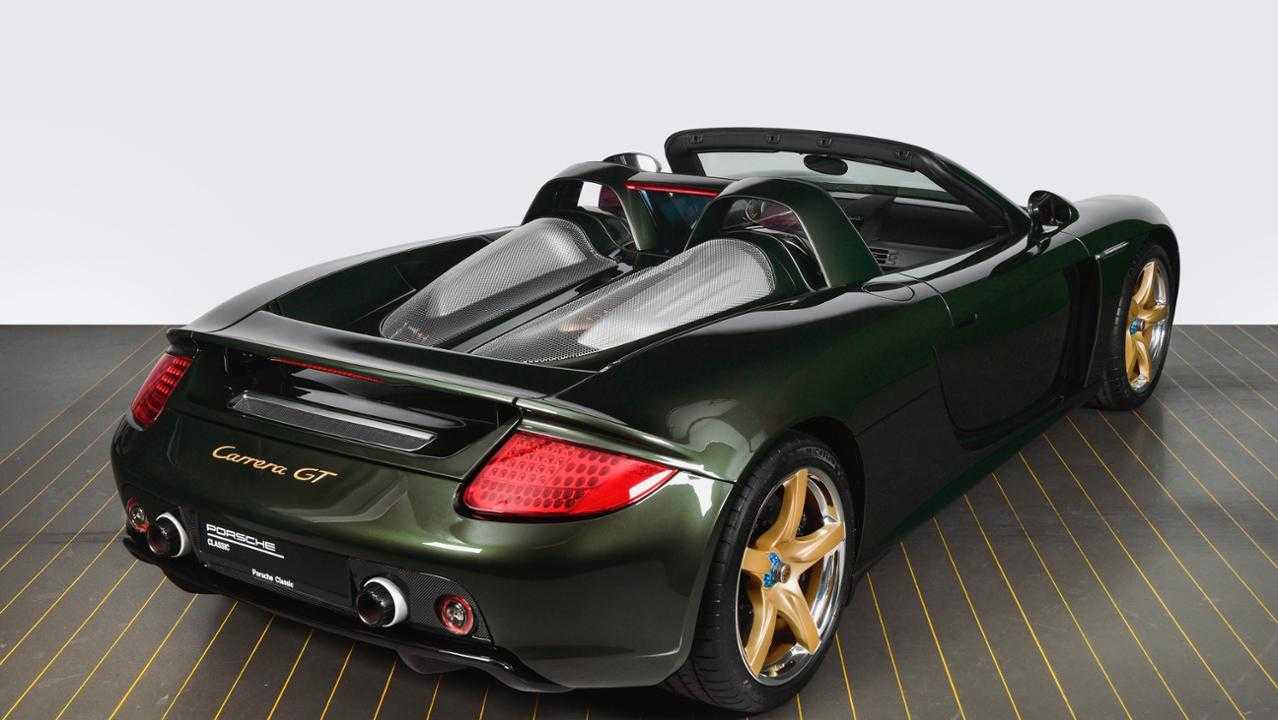
The complementary five-spoke magnesium tires were specially designed, taking their initial inspiration from the legendary motorsport tires from BBS, which had a star-spoke painted in gold and a polished rim ring.
However, material experts from the Porsche R&D center Weissach advised that polishing the rim ring would structurally alter the material in such a way that it would potentially be dangerously weakened, so an alternative engineering process was required to create the desired metallic high-gloss effect rim.
A Silver Ring Coated with Silver
The solution to the challenge lay in using silver, a precious metal. In an innovative procedure that had never before been used in series vehicle construction, a silver layer was applied to create a visually chrome-like surface finish.
This high-gloss silver layer requires a final protective coating though because silver is second only to iron in terms of metals that most readily oxidize: where prolonged on iron results in rust, silver responds to exposure to atmospheric oxygen and water by accumulating unsightly black tarnish on its surface.
This is why the silver-coated rim ring required a protective layer of clear lacquer, and the star-spoke was painted in gold to match. Serving as a technical contrast to this is the blue-and-silver central wheel lock, bearing the Porsche emblem in color.
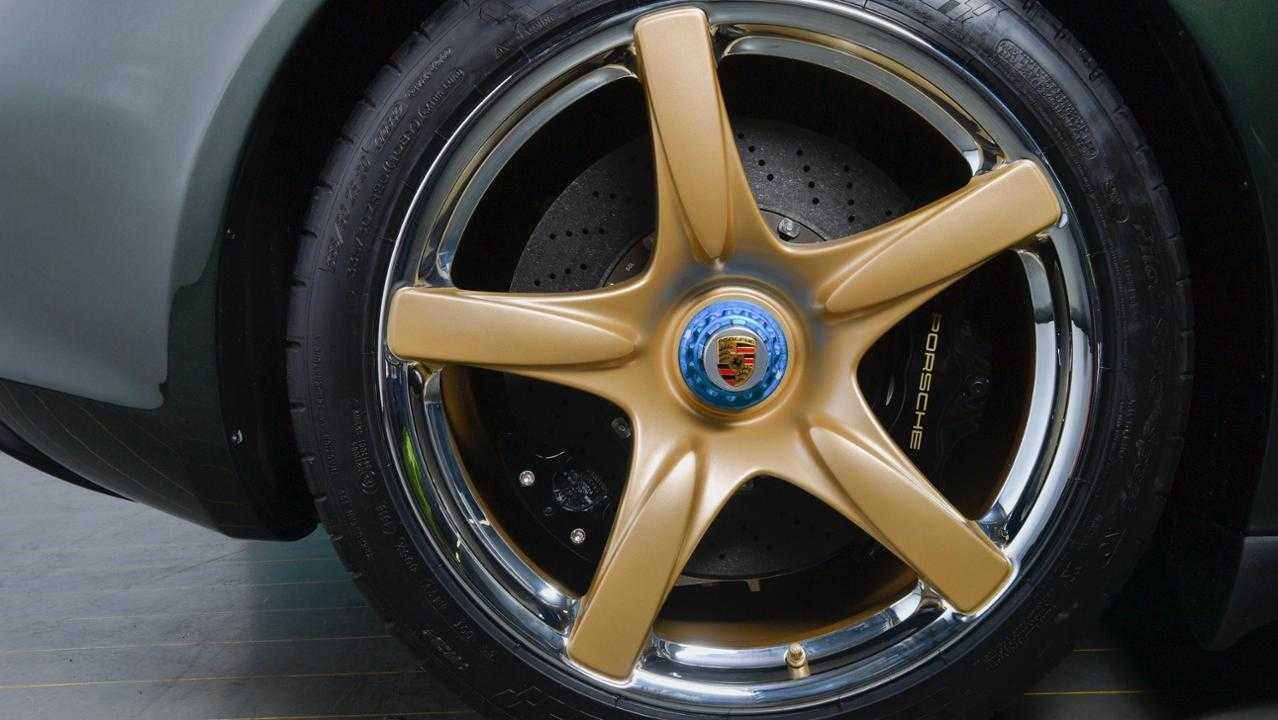
The gold of the star-spoke has also been picked up elsewhere, for example in the Porsche lettering on the brake callipers, in the engine compartment, on the intake housings, and even in the interior, where the top marking in the center of the steering wheel is adorned by a single gold stripe flanked on both sides by a stripe of Oak Green – a discreet and individual touch.
Elaborate Repair of All Carbon Fiber Parts
Even at this stage, the work on this special Carrera GT was far from complete. “Because the coating on older carbon fiber parts tends to yellow and fade, we spent 350 hours manually sanding and recoating all the carbon fiber components, including the monocoque,” explains Uwe Makrutzki, Manager of Porsche Classic Factory Restorations in Stuttgart.
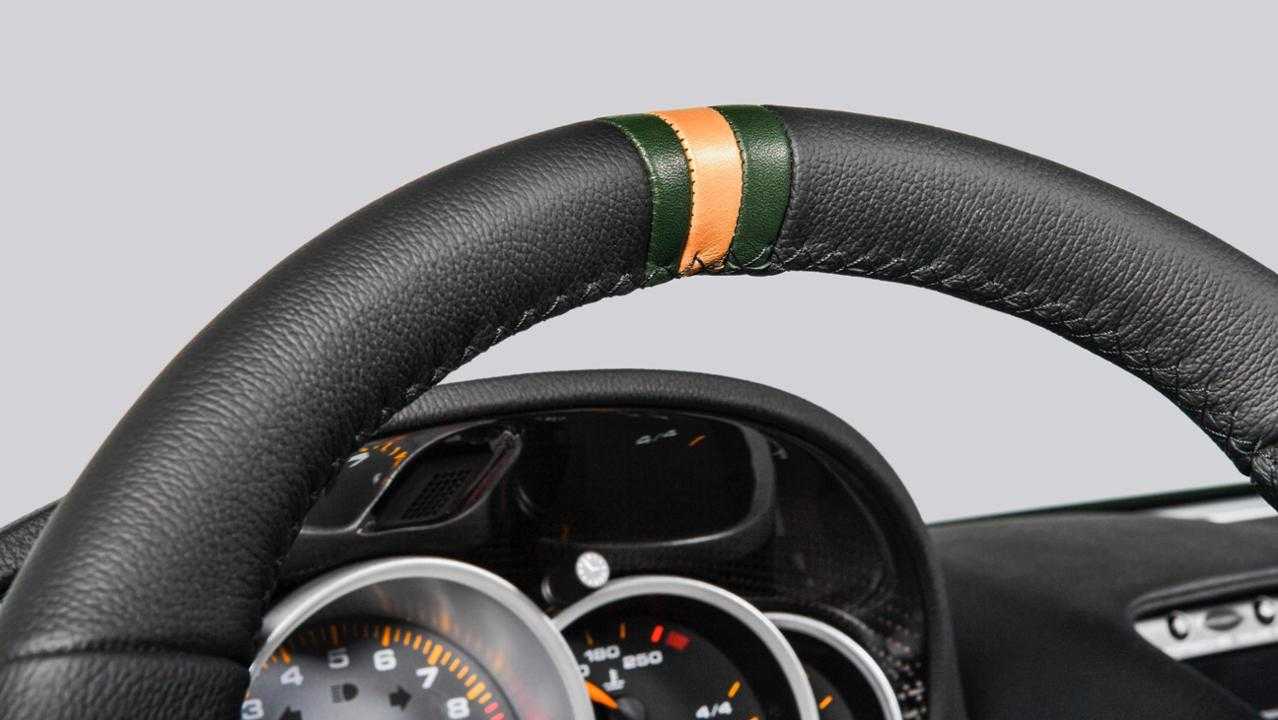
The vehicle is now ready for delivery, and at the invitation of Porsche Cars North America, Porsche Classic has presented it for the first time at the Porsche Experience Center in Atlanta, to a select group of 100 invited guests including the car’s owner.
Porsche Classic also hosted a symposium to coincide with the event, moderated by motor journalist Pete Stout, and featuring Alexander Fabig, Head of Customer Center, Uwe Makrutzki, Manager of Porsche Classic Workshop Restoration, record-winning race driver David Donohue, and Porsche Designer Tony Hatter, who were all available to talk about the project and answer questions.
About Porsche Classic
Porsche Classic takes care of all vehicles whose production end date is generally more than ten years in the past.
These include legendary sports cars, such as the 356, 914, 959 and 911 up to and including type 996, as well as all four and eight-cylinder vehicles, such as the 924, 928, 944 and 968, and the Porsche Boxster, type 986. Since 2016, Porsche Classic has also been responsible for the genuine parts supply of the Carrera GT super sportscar. Further information is available at Porsche.
Performance & Specifications Summary
Model & Pricing Info
| Make | Porsche |
| Model | Carrera GT |
| Car type | Coupe |
| Category | Limited Series Production Car |
| Built At | Zuffenhausen, Germany |
| Introduced | 2004 |
| Base Price (US) | $440,000 |
| Units built | 1,270 |
Chassis, Suspension & Powertrain
| Curb Weight | 1,380 kg (3,042 lbs) |
| Layout | Rear mid-engine, Rear-wheel drive |
| Body / Frame | Pure carbon fiber monocoque and subframe |
| Suspension (F) | Independent double-wishbone with axle push rods made from aluminum |
| Suspension (R) | Independent double-wishbone with axle push rods made from aluminum |
| Steering | Power-assisted rack-and-pinion |
| Brakes | Porsche Carbon Ceramic Brakes (380 mm carbon-ceramic brake discs and 6-piston calipers, front and rear) |
| Tires | Michelin (F: 265/35/19, R: 335/30/20) |
| Transmission | 6-Speed Manual |
Engine, Output & Performance
| Engine | V10 |
| Displacement (Litres) | 5.7L |
| Aspiration | Naturally Aspirated |
| Power (hp) | 612 hp @ 8,000 rpm |
| Power (hp) / liter | 107.4 hp / liter |
| Power (hp) / weight | 0.44 hp / kg |
| Torque | 435 lb-ft @ 5,750 rpm |
| 0-60 mph time | 3.8 seconds |
| ¼ Mile (standing) | 11.3 seconds |
| Top Speed | 205 mph (330 km/h) |
| Average Fuel Consumption | 16 mpg (combined) |
7 A Supercar In Its Purest Form
Via netcarshow.com
A huge reason why the Carrera GT is so highly regarded in the world of cars is how analog and how barebones it is. Barebones in a good way, of course. Supercars of today are riddled with the latest and greatest in electronic aids to stop you from making a hash of things.
netcarshow.com
The Carrera GT takes a different approach. You only have the bare minimum of electronics to stop you from crashing into a tree at 20 mph. Traction control is here, but that’s about it. There’s no stability control, no AWD, no torque vectoring, no four-wheel steering, nothing. Just a V10, a 6-speed manual, RWD and your skills do the rest, the way it was meant to be.
Design, Styling, & Interior
On the outside, there is nothing to suggest that the Porsche Carrera GT should be anything but a purpose-built super/hyper sports car. The silhouette of the car is a properly executed amalgamation of sleek and muscular features which certainly feels applicable to the Carrera GT’s overall demeanor.
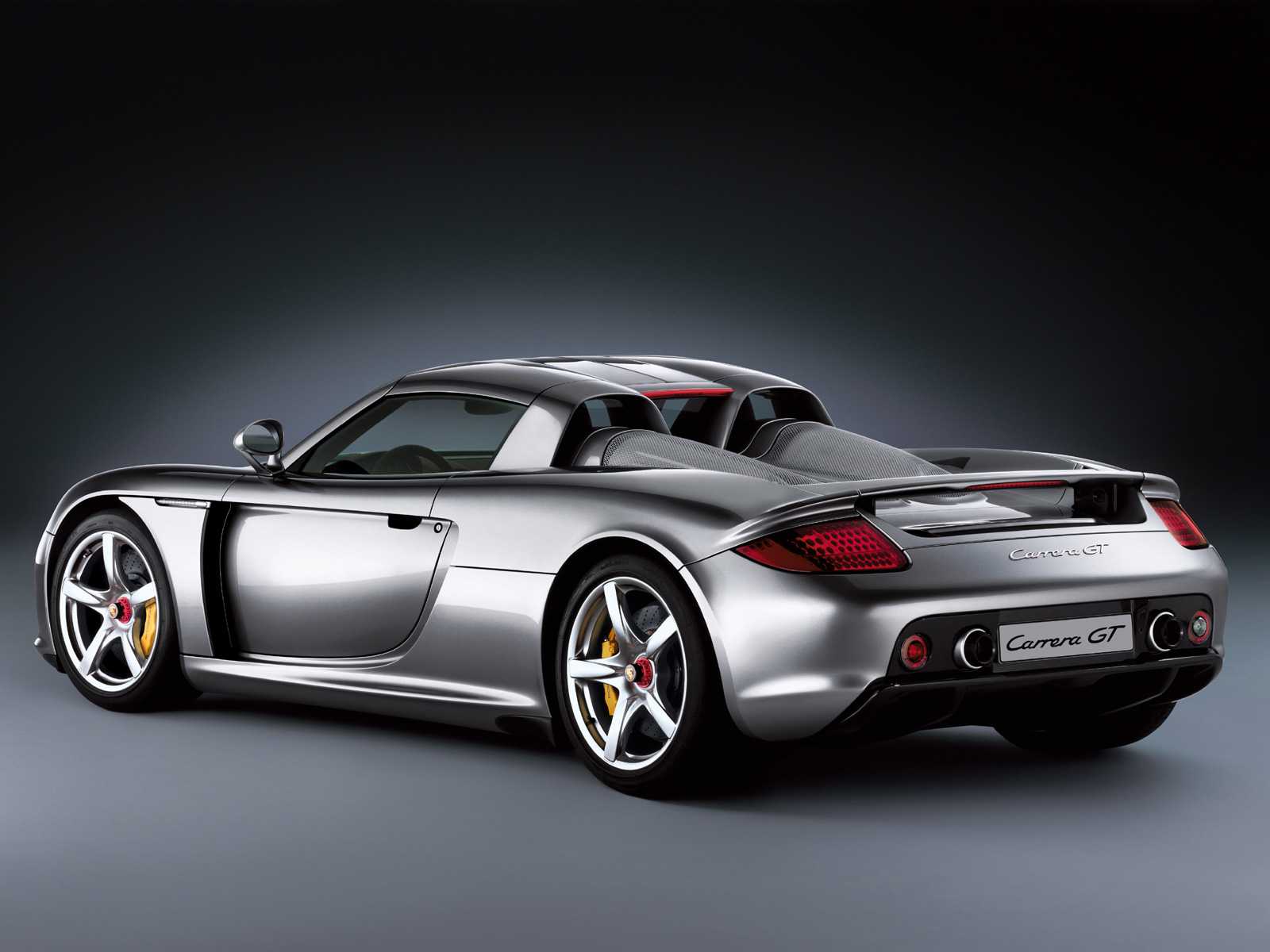
From the front particularly, the car is still undeniably a Porsche, with its headlights paying tribute to the Porsche 917 – the first Porsche race car to win at Le Mans. The bulgy front fenders extend across the doors and connect to the rear haunches of the car, which then blend into its extroverted rear deck finished off by the large, retractable rear wing.
The double-clamshell engine lid conceals the 5.7L power plant while complimenting the two roll hoops it sits purposefully behind. The windshield and windows are designed to provide maximum visibility to the driver from all angles.
The cockpit of the Carrera GT is relatively understated but still more than adequately appointed with its perfect blend of functionality, elegance, and convenience. The center console inclines at a sharp angle towards the front dash, and is fully made from carbon and bolted to the chassis of the car to promote rigidity and safety.
Mounted near the top of the center console, is one of the Carrera GT’s most quintessential features – its ergonomically located manual gearbox fitted with a laminated birchwood shift knob, which pays tribute to the heritage of Porsche motorsport.
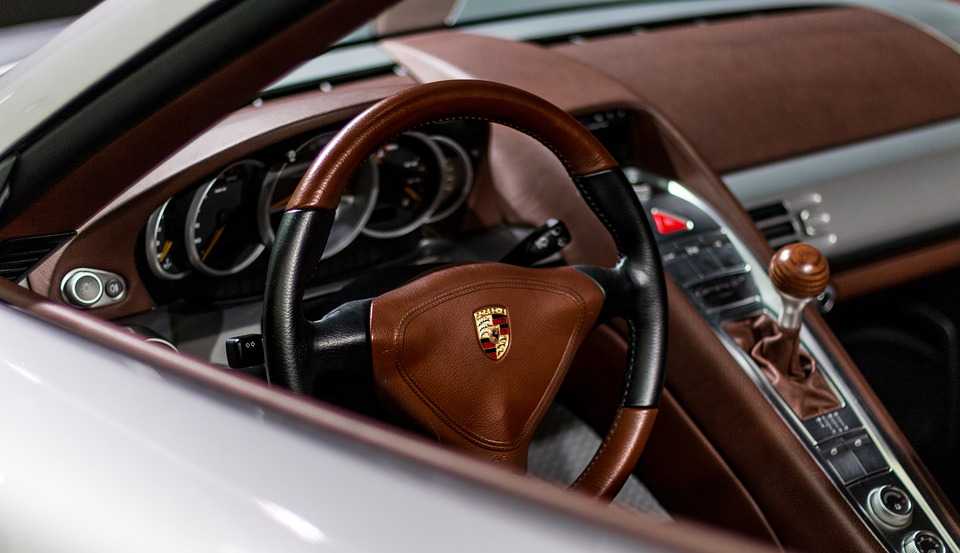
One of the Carrera GT’s world firsts for production cars was its use of sport buckets made from a special hybrid of carbon fiber and aramid fiber, which is commonly known today as carbon kevlar. This super light and durable composite meant that the seats could be upholstered in high-end leather and still weigh less than 23 pounds each. With comfort still being a paramount feature in the Carrera GT, Porsche fitted the car with power windows, air conditioning, infotainment, and BOSE speakers.
4 A Gorgeous, Timeless Interior
netcarshow.com
Step inside the Carrera GT, and you’ll find a cabin that’s befitting of how special and how driver-focused this car is. There is a lot of resemblance to Porsche models of the time, but everything is simple, clean, beautiful, and functional.
netcarshow.com
The «waterfall» center console was so good, even the 918 Spyder got it. There’s a few buttons and dials, the iconic beech wood shift knob that your hand gets acquainted with while going through the gears, as well as the traditional Porsche gauge cluster and ignition tumbler to the left of the steering wheel. A timeless piece of automotive interior design.
Carrera GT Transmission
For sport car connoisseurs, the 6-speed manual transmission was incorporated into the design of the Carrera GT. It is one of the most significant decisions made by the automaker. With a rising number of sports car manufacturers incorporating automatic or semi-automatic transmissions, the appreciation of the traditional transmission does not go unnoticed. This innovative manual gearbox was designed specifically for the Porsche Carrera GT specs to ensure that it remained compact and in line with the car’s focus on low-weight and even weight distribution. Paired with the world’s first ceramic clutch, drivers have full control over shifting gears, which is absolutely paramount when it comes to the Porsche Carrera GT 0-60 time of just 3.5 seconds. This ensures a smooth and consistent ride regardless of the driving environment.
Final Verdict
As my fellow Supercars.net colleague, Nick Dellis once remarked, “The world is full of armchair commentators when it comes to cars. At Supercars.net we have a number of journalists and automotive publications we rely on when we want to get unbiased opinions from people we admire.”
Below are snippets from some of our favorite car reviewers and automotive personalities regarding the Porsche 911 Speedster. As always, we ask that you support the amazing publications they release, so that the automotive community continues to benefit from the hard work and enthusiasm they put into providing us with content that we love.
Car Magazine – “Brilliant. Pure, Full-fat Unadulterated Brilliance.” – 5/5
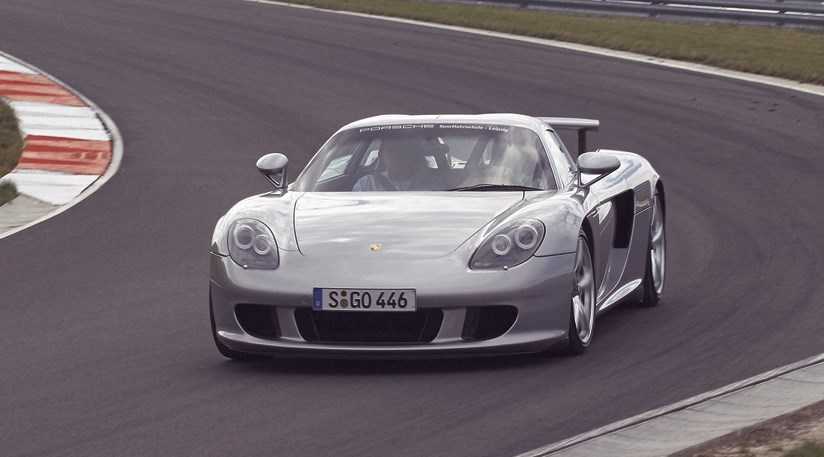
Ben Whitworth from carmagazine.co.uk reviewed the Porsche Carrera GT in 2008. He admits that the car can be a hassle to drive in low speed, stop-and-go traffic thanks to the sensitively operated clutch. Where things really start to get good are when “It’s only above 3000rpm that the ride, steering, chassis, and engine really start to work their magic. But boy, what magic.”
The Carrera GT’s handling is the perfect compliment to its engine, where he notes that “One of the car’s key attributes is its forgiving chassis and superb steering that together allow you to extract the best that fabulous engine has to offer. The more speed you add, the smoother and more fluid the ride becomes, allowing you to sew a series of bends together with real precision and confidence.”
A disclaimer to end things off though, as he reminds us that “You can drive the Carrera GT at seven-tenths all day – which by normal standards is still phenomenally quick – but you’d better have your go-fast synapses all snapping together if you push harder.”
More: Read full review
Autotrader- “…the greatest experience of my entire life.” – DOUGSCORE: 71
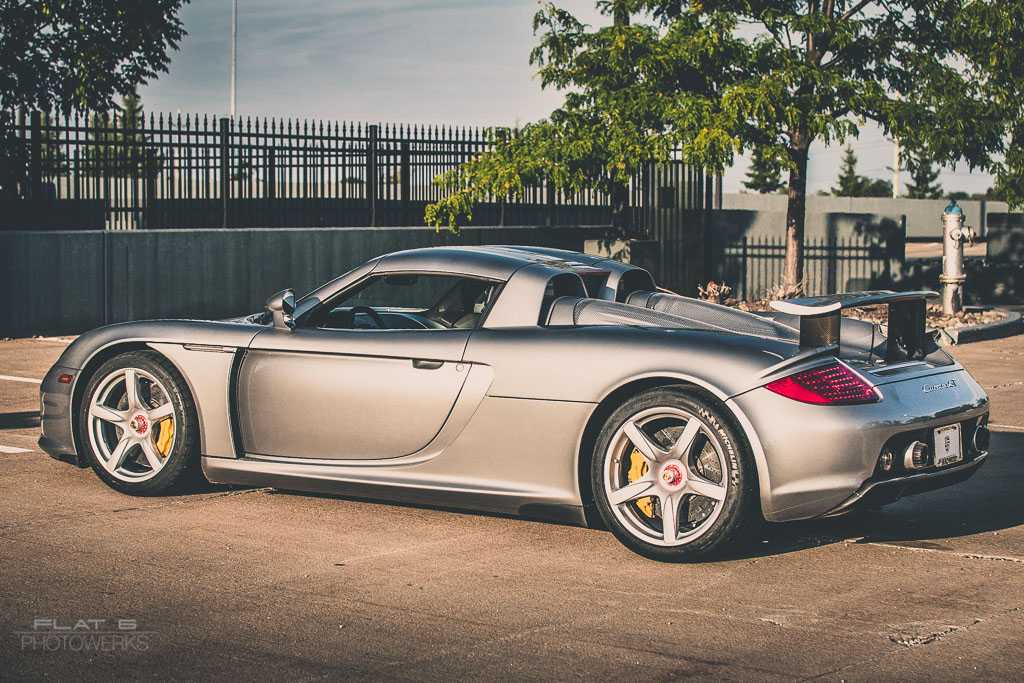
It’s easy to forget that Doug DeMuro actually writes his reviews on behalf of Autotrader, as the charismatic – and often quirky – the presenter has transcended into his own form of celebrity through his entertaining video car reviews.
His written review of the Porsche Carrera GT is a loosely based transcript of his video performance, mentioned earlier in my review. There are some things he reveals in his written article which he didn’t on Youtube, such as what was going through his mind before getting into the driver’s seat. “I’ve never felt so much pressure in my entire life. Tom Brady has never felt so much pressure in his entire life,” he remarked.
Doug knew that that car would be impressive, but he noted that “What was a surprise, however, was just how much I didn’t feel intimidated when I was behind the wheel.”, which is a testament to Porsche engineering principles.
His final word: “My all-time favorite dream car. And the greatest car ever made.”
More: Read full review
5/5
The Porsche Carrera GT is one of the most distinguished representatives of an automotive era now concluded. It was the last supercar to be fitted with a true manual transmission. It introduced world-first technologies derived from racing, in a road car. It could very well be the last driver-focused car of its kind, with no successor – spiritually or materially.
In fact, Michael Hölscher who led the development of the Carrera GT has stated regarding a second iteration, “We don’t want one. We have promised customers that there will be no successor. It would kill the value of the GT overnight. But we will always demonstrate that we are a leader in technology.”
However, we will continue to see the Carrera GT’s influence in Porsche’s production cars which have – and are yet to – come through the production pipeline. “We have learned from the Carrera GT programme how to work with carbon fiber, ceramics, and magnesium. It’s a technology that will filter down into new products.” Hölscher notes.
This is especially important as the automotive landscape is changing both drastically and exponentially, as time goes on. In a future that looks to be dominated by software and electronics, the Carrera GT will hopefully serve as a reminder for Porsche to continue engineering cars that elicit an emotional connection with their owners/drivers. I am confident that Porsche is well-positioned to be both a leader in technology, while also staying true to its heritage.
The Porsche Carrera GT will always be one of the most incredibly balanced and exquisitely engineered cars ever made. Many years into the future – perhaps when the role of the automobile as we know it, becomes obsolete – the Carrera GT will become the equivalent of scripture for the soul; something for us to deeply reflect on, as we look to rekindle our relationship with the simple and good things in life.
Дизайн
Carrera GT оснащен 5,7-литровым (5733 куб. См) двигателем V10 мощностью 450 кВт (612 л.с., 603 л.с.), тогда как оригинальный концепт-кар имел 5,5-литровую версию мощностью 416 кВт (566 л.с., 558 л.с.). Дорожные испытания, проведенные в июне 2004 г. компанией Car and Driver, показали, что автомобиль может разгоняться от 0 до 60 миль в час (97 км / ч) за 3,5 секунды, 0-100 миль в час (161 км / ч) за 6,8 секунды и 0-209 км / ч. ч (130 миль / ч) за 10,8 секунды. Официальная максимальная скорость составляла 330 км / ч (205 миль / ч).
Carrera GT предлагалась с базовой пятицветной схемой окраски, которая включает в себя Guards Red, Fayence Yellow, Basalt Black, GT Silver metallic и Seal Grey. Позже на заводе были доступны нестандартные цвета. Единственной доступной трансмиссией является традиционная шестиступенчатая механическая коробка передач.
Carrera GT имеет большие боковые воздухозаборники и воздушные заслонки, которые помогают охлаждать большой двигатель V10, обрамленный задним капотом из углеродного волокна. 15-дюймовые (380 мм) дисковые тормоза SGL Carbon установлены внутри 19-дюймовых передних и 20-дюймовых задних 5-спицевых легкосплавных дисков, оснащенных новейшей керамической композитной тормозной системой Porsche, (C / SiC) . Подобно другим моделям Porsche, таким как , GT включает в себя заднее антикрыло с электронным управлением, которое разворачивается на скорости выше 113 км / ч (70 миль в час).
Салон отделан мягкой кожей. Аудиосистема Bose и навигационная система были стандартными. В типичной манере Porsche зажигание находится слева от рулевого колеса. Это место относится к ранним дням гонок в Ле-Мане, когда водители должны были начать разбег, запрыгнуть в свои машины, завести их и начать гонку. Расположение зажигания позволяло водителю заводить машину левой рукой и включать передачу правой. Первоначально у автомобиля была ручка переключения передач из букового дерева , которая отдает дань уважения деревянной ручке переключения передач, использовавшейся в гоночном автомобиле Le Mans. На второй год производства также стала доступна ручка из углеродного волокна.
Carrera GT Engine
It arrived with a 5.7-liter V10 engine with an output of 603 hp. With 435 lb-ft of torque, the Carrera GT is far from the average sports car. This model is best known for its fast acceleration, achieving speeds of 0 to 60 MPH in 3.5 seconds flat and 0 to 130 MPH in as little as 10.8 seconds. The incredible Carrera GT engine with technology and roots derived from endurance racing at the 24 Hours of Le Mans is what makes the Porsche Carrera GT top speed of 208 MPH possible; the car has all of the power and speed of a Formula One race car. Intended for use on the road, however, the Carrera’s ten-cylinder design also makes it suitable for everyday driving at low and average driving speeds. With its successor, the 918 Spyder, being a hybrid hypercar, the Carrera GT would be the final naturally-aspirated supercar/hypercar to be created.
Engine & Performance
Specifications:
- Engine Type & Size: 5.7L Naturally Aspirated V10
- Horsepower: 612 hp @ 8,000 rpm
- Torque: 435 lb-ft @ 5,750 rpm
- Transmission: 6-speed Manual
- O-60 mph: 3.8 seconds
What makes the Porsche Carrera GT engine so special is that it is technically a race car engine. Not in that loosely-based sense, often used as a sales gimmick in marketing ads these days, but in the true sense of the word.
In the late 1990s, Porsche engineers in Zuffenhausen were assigned the task of developing a naturally aspirated V10 concept engine which was to later be used in a race car for the infamous 24 Hours of Le Mans endurance race.
Sadly, the completion of that race car never came to fruition, but the efforts of the engine builders would not be wasted. Porsche decided to adapt the engine for the use in the Carrera GT and took the necessary steps to not only refine it in order to satisfy production car protocols but still managed to make it a more powerful version than the original unit.
The result is a naturally aspirated 5.7L V10 midship engine, which produces 612-horsepower @ 8,000 rpm and 435 lb-ft of torque at 5,750 rpm. This allowed the Carrera GT to accelerate to 0-60 mph in 3.8 seconds and 0-100 mph in 6.9 seconds, with a top speed of 205 mph.
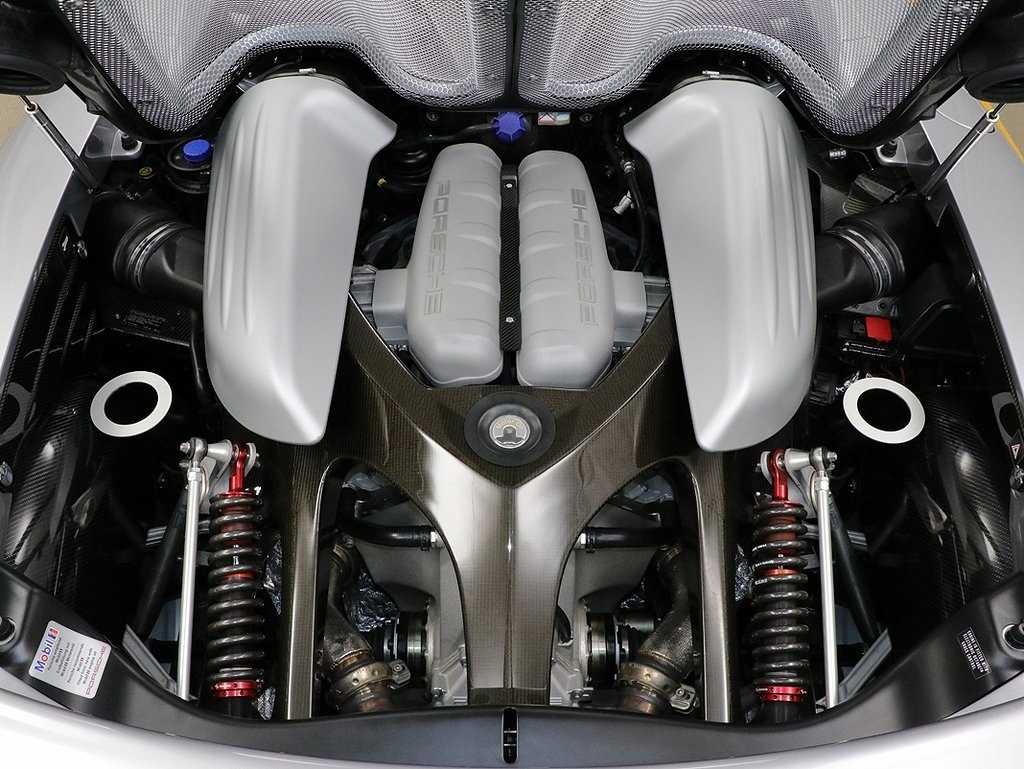
The engine wasn’t just all brawn, as it was meticulously designed to be just one element of something that was greater than the sum of its own parts. For example, the optimized V-angle of the cylinders and the extremely low-to-the-ground crankshaft helps to give the car a very low center of gravity which enhances its overall handling and chassis capabilities.
The Carrera GT’s V10 engine, in spite of its large displacement, weighs in at just 472 pounds thanks to the extensive use of lightweight forged alloy materials which provides bulletproof engine internals which have the highest levels of temperature resistance.
Mated to the powerplant is a six-speed manual transmission developed especially for the Carrera GT. Like the rest of the car’s driving components, the transmission was also designed to be compact and ideally specced to reduce overall weight and maintain an optimum weight distribution.
For the first time in a production car, Porsche introduced a factory-installed ceramic clutch known officially as Porsche Ceramic Composite Clutch – or PCCC. While sharing the characteristics of some race car clutches such as compactness and low mass, PCCC was also designed to meet or exceed the life expectancy of conventional clutch plates, making it suitable for everyday driving applications and importantly, fit for use on a production car.
The transmission, in an overall sense, is able to smoothly translate the car’s massive power into something that is as manageable as it is robust. Although the grabby and sensitive ceramic clutch will likely take some time to get acquainted with, it will soon reward the driver with solid, mechanical shifts which could be most accurately described in one word as “satisfying”.
6 The Side Effect Of No Electronic Nannies
netcarshow.com
Yes, it’s a good thing that the Carrera GT has almost nothing that gets in the way of the communication between driver and machine, but sometimes, this isn’t always a good thing. Obviously, a skilled driver can handle the Carrera GT without breaking a sweat.
netcarshow.com
But, if you’re not prepared for it, the Carrera GT will smack you in the face several times and then point and laugh at you. Even setting off isn’t a walk in the park, due to the very unusual clutch engagement. The unfortunate passing of Paul Walker back in 2013 made the whole world realize what happens if you don’t tame a Carrera GT properly. If you do tame it, it’s one of the most rewarding cars ever made.
Carrera GT Brakes
A sports car with the immense power and speed of the Porsche CGT requires a superior braking system to ensure safety. The designers of the Carrera GT opted for Porsche Ceramic Composite Brakes (PCCB) to achieve this feat. Like the rest of the vehicles, designers considered both weight and performance when making this decision. Especially because the Porsche Carrera GT horsepower is 603, especially high for such a light car, the brakes needed to be able to handle a stop from 60-0 twice as quick as the car could accelerate from 0-60. These ceramic composite brakes are approximately half the weight of cast brake discs which contributes to the aerodynamic design. The performance was not sacrificed with these 350-millimeter discs. Because they are known for creating consistent friction while maintaining a smooth stopping distance from 60 to 0 MPH in a mere 101 feet.
История
История создания Carrera GT восходит к гоночным автомобилям 911 GT1 и LMP1-98 . Отчасти из-за изменений правил FIA и ACO в 1998 году оба дизайна были прекращены. Porsche в то время планировал новый прототип Ле-Мана на сезон 1999 года.
Автомобиль был первоначально предназначен для использования турбированного шестицилиндрового двигателя , но позже был переработан , чтобы использовать новый двигатель V10 , выдвигая проект обратно запланированного завершение в 2000 годе V10 был блоком тайно построил Porsche для Footwork Formula One команды в 1992 году, но позже отложили. Двигатель был возрожден для прототипа Ле-Мана.
Проект был отменен после двухдневных испытаний первого автомобиля в середине 1999 года, в основном из-за желания Porsche построить внедорожник Cayenne с участием Volkswagen и Audi , что потребовало привлечения инженерных знаний из подразделения автоспорта. Также предполагалось, что председатель VW-Audi Фердинанд Пиех хотел, чтобы новый прототип Audi в Ле-Мане , Audi R8 , не столкнулся с конкуренцией со стороны Porsche в 2004 году.
Porsche сохранила часть проекта, использовав 5,5-литровый V10 из прототипа в концептуальном автомобиле под названием Carrera GT, показанном на Парижском автосалоне 2000 года , главным образом в попытке привлечь внимание к их дисплею. Неожиданный интерес к автомобилю и приток доходов от Cayenne помог Porsche принять решение о производстве автомобиля, и началась разработка дорожной версии, которая будет производиться небольшими партиями на новом производственном предприятии Porsche в Лейпциге
Porsche начал производство Carrera GT в 2004 году. Первая Carrera GT поступила в продажу в США 31 января 2004 года.
Первоначально планировалось произвести 1500 автомобилей. Однако в августе 2005 года Porsche объявила, что не будет продолжать производство Carrera GT до 2006 года, сославшись на то, что прекращение производства связано с изменением правил использования подушек безопасности в Соединенных Штатах. К концу производства 6 мая 2006 года было продано более 1270 автомобилей, в общей сложности 644 единицы проданы в США и 31 единица проданы в Канаде. В Великобритании было продано 49 единиц.
Carrera GT Standout Features
The Carrera GT is a one-of-a-kind sports car with a number of innovative, standout features. One of the most renowned features of this model is the inclusion of carbon-fiber-reinforced plastic. The lightweight and aerodynamic features of the Carrera GT allow it to reach nearly unheard-of speeds for a production car while exercising horsepower that is three times that of the average vehicle. Other popular features of this model include a user-friendly roof system. For the first year, Porsche crafted the shifter out of beechwood. This material for the shift knob was picked to mirror the wooden one used in the original Porsche 917 race car. In the second year of production, Porsche introduced a carbon fiber shifter as an option. The world’s first ceramic clutch is light and revs easily. Most intriguing, however, is the focus on functionality, speed, and overall performance in a world where sports cars are typically packed full of luxurious bells and whistles.
All Porsche Carrera GTs For Sale
Images by Jorge A. Guasso
Pricing
When the Porsche Carrera GT was released for the production year 2004, it had a retail price of $440,000 USD. Few would have guessed that its price would skyrocket over time to the levels they are at now – least of all Porsche, who cut production of the Carrera GT well before reaching its original target of producing 1,500 examples.
Today, a used Porsche Carrera GT can go for upwards of $700,000 USD. Some of the lowest mileage and best condition examples have been seen to fetch north of $1,000,000 USD.
Over the past 15 years, the Carrera GT has become one of the most renowned supercars in history; thanks to its unique blend of driver-focused elements and advanced road-going technologies, it epitomizes what has now become the pinnacle of an era in which cars of this ilk would be produced.
Knowing what the Carrera GT represents and possessing a rudimentary understanding of economics, my guess is that these prices will only go up as time passes.
